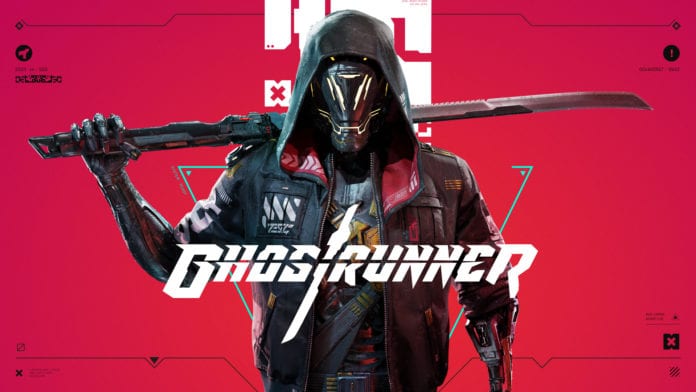It has been quite some time since I have dabbed in some solid mechanics-based games with a deep story. Prince of Persia happened years back, and most recently the Talos Principle was something (even though it was mainly puzzle-based and nothing else). The focus for the gaming industry right now has become the addition of non-linearity to as many titles as possible. Good linear single-player titles have become extremely rare, as a result, with few people interested to take the leap of faith and build something new. Fast forward to E3 2019, and we got ourselves a solid game that mixes solid mechanics and storytelling with a setting that most people like a lot. No, I’m not talking about Cyberpunk 2077, but another cyberpunk title with quite a bit of storytelling – Ghostrunner.
The Dystopian Dream
If you’re thinking we can’t have enough dystopian titles as of late, think again. Ghostrunner adds yet another title that uses the setting and pulls that off relatively well as compared to most other titles of the genre. However, the negativity in the setting brews quite strongly here as compared to other games. Apparently, humanity has been at the forefront of a big apocalypse that had destroyed a majority of the world’s population. The remainder of humanity lives in a large skyscraper-like structure called Dharma City. Dharma City is guarded by some of the best peacekeeping forces known to humankind, also known as Ghostrunners. Ghostrunners are technologically enhanced supersoldiers designed to keep the peace in the tower. Things don’t go well for Dharma City when it’s founder, also abbreviated as Adam or simply “The Architect”, is killed by its co-founder Mara, who simply took over the reins for humanity. Mara’s coup also resulted in the death of all the Ghostrunners. All of them? Well, all but one – the game’s protagonist is the last known Ghostrunner to mankind who was rescued by some of the folks rebelling against Mara’s regime and repaired to a working state. It is from here that the events of the game take place.
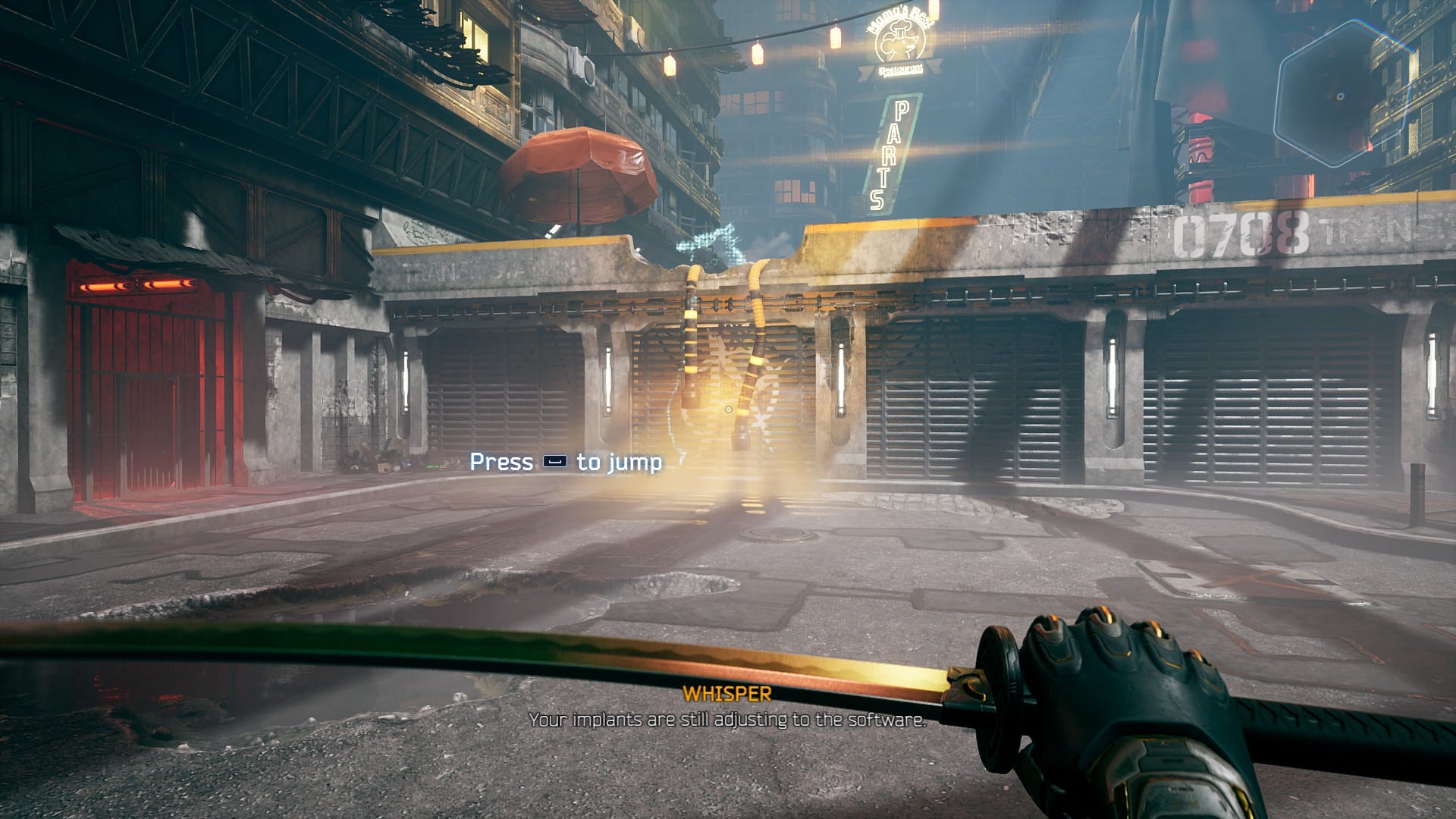
Ghostrunner’s story is told slowly as one progresses through levels. The plot’s build-up is kind of uneven, which might not go down well with some of you. What’s really amazing is what’s waiting at the end of the line – that’s really something that might surprise the folks who are in it for the story. The game pulls off a Prince of Persia on you when you think it’s really over and your duty to the folks living in the Dharma City has been fulfilled. Sadly, the storytelling itself is pretty boring, which kind of ruins the anticipation for the well-scripted ending left by the developers.
Ghostrunner has multiple references to the lore and what had happened to the world which resulted in the subjugation of people to the living depths of Dharma City. After the prologue, the Architect sort of “possesses” the protagonist and stays inside his circuits to keep himself alive, occasionally talking to him and helping him out. These conversations shed a lot of light on the world, which sadly isn’t interesting enough to keep listening to. The story refers to an apocalypse but is unsure of what forced humanity to live inside Dharma City. There’s also no mention of why a coup even took place in the first place (if only a few lucky folks survived an apocalypse, should you be butchering yourselves and reducing your own numbers?). Ghostrunner’s main storyline is also a pretty cliché revenge plot that I have grown used to seeing in most modern video games. Ghostrunner is one of those games that sell mechanics and skimp on pretty much everything else, and it’s a bit sad to see an otherwise awesome game have such an awful downside.
Wall-Running in Full Glory
Ghostrunner relies heavily on its mechanics to stay in the light. With that being said, I haven’t seen a game more unique in terms of its mechanics. Ghostrunners have enhanced agility, strength, and endurance, allowing them to scale heights and run on walls at incredible speeds. The game plays almost like a 3D platformer, where you have to make your way through multiple walls, platforms, pipes, rails, and hangers to get to the next level. As one progresses, more and more ways of traversal are unlocked. The game does a good job of teaching you how to traverse through these but stops throwing hints once it’s sure of your ability to learn and adapt to the environment. I really liked the game’s environment design a lot – if there’s a reason the game should get love from its audience, it’s definitely for the environment. The game’s environment is designed to test your skills to the maximum – make no mistake, traversing the chasm without falling into it is not for the faint-hearted.
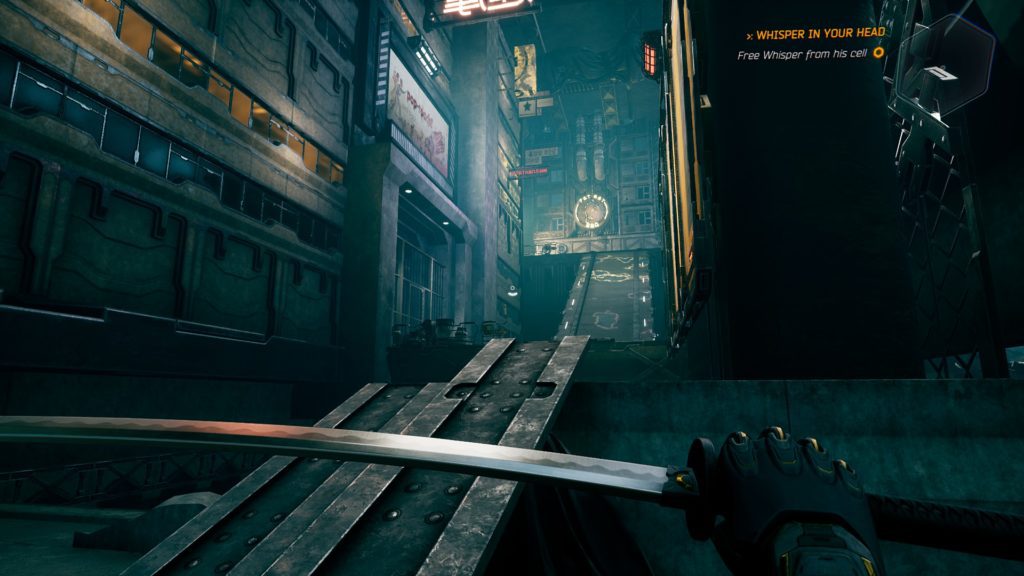
It seems amazing how well the game’s bits and pieces are put together almost as if they are part of a puzzle. There are “proper” puzzle elements within the game within the Cybervoid where the Architect helps you get your abilities back, but the truth is told, the game itself is a big puzzle. Almost every section can be approached in multiple ways – the only objective is to clear out all the enemies in that section. You’re probably wondering now – “Enemies?” Well yes, Ghostrunners aren’t the only peacekeeping force in town. Mara’s loyal soldiers are out to get you, and there are a lot of them to care about. This makes moving through the game’s levels a lot tougher than they should be – probably the only reason most people who start it never get to finish it. I died a lot even at easier levels, but that’s what helped me improve, allowing me to have a better record at the more difficult levels. Sadly, there’s no scaling as such, so some parts of a level might be extremely tough, while others might be easier than one might expect. You’ll die a lot – yes, a lot – but that’s exactly what makes pushing for completion of levels so rewarding.
What I really liked were the puzzling sections of the game, which “The Architect” calls “the Cybervoid”. The Cybervoid has puzzles which one must complete to unlock more of the Ghostrunner’s powers (and incidentally, more of his memories). After the puzzle is solved, one needs to complete a brief tutorial on the new power before one gets to the next section in Dharma City. The tower may itself be a maze of puzzles to traverse, but it’s the Cybervoid which really takes your brain to solve the puzzles. While the game itself doesn’t hold your hands when it comes to solving these puzzles, they are pretty simple, and one wouldn’t have a hard time with them.
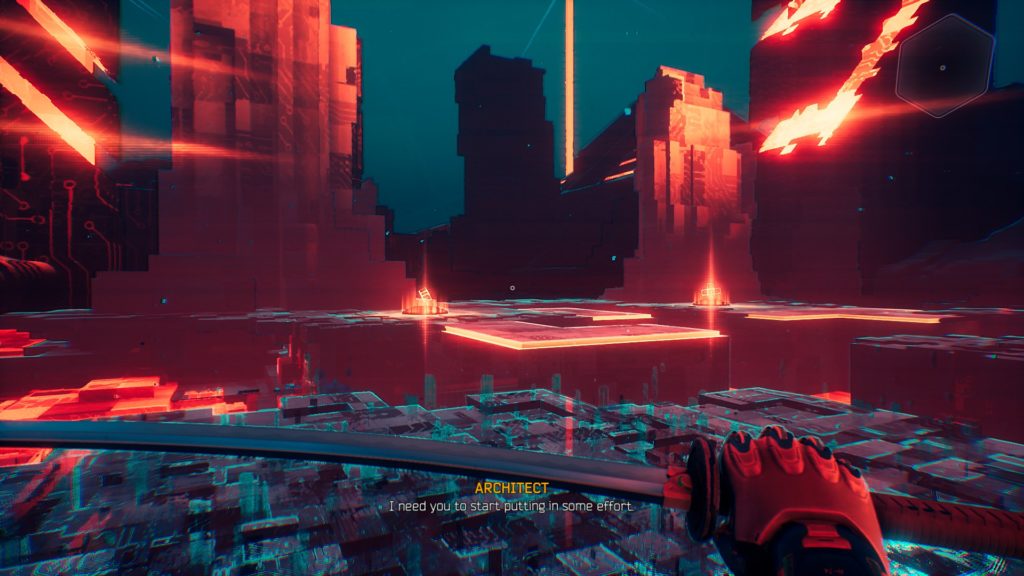
Enemies…And Big Bosses?
The game has a wide range of enemies placed “strategically” throughout the level. Some shoot pistols, some use an automatic, some even use swords to slash you up from close! Being lonely in Dharma City certainly is tough, especially if you manage to get on the wrong side of one of its founders. To clear a section of a level, the Ghostrunner needs to completely eliminate all of the guards on the section before proceeding to the next section. The game’s design allows multiple approaches to kill an enemy, which allows some amount of freedom to the player. With that being said, there are some frustrating sections that might take a toll even on the most hardcore completionists.
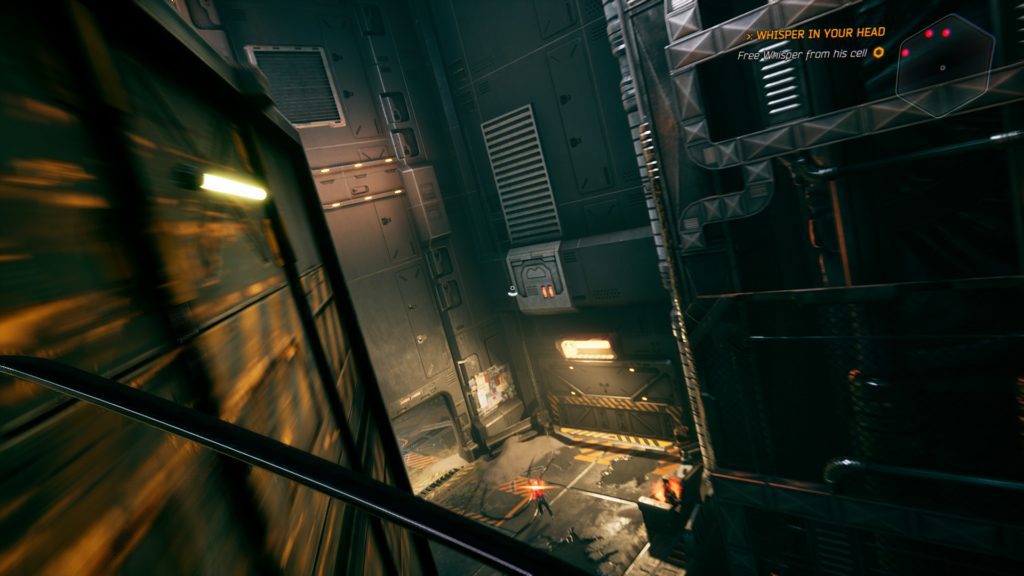
If the game’s base enemies seem too tame for you, there are “advanced” enemies in the form of bosses. As one progresses through the story, one needs to beat more powerful enemies before they can successfully close out the level. The Ghostrunner’s special powers come in need every time one needs to go for the kill, but one needs to be fast enough in scaling the environment before the environment gets to them. The boss fights are slightly played out like Agony (anyone remembers that game? Guess only I do) – you need to interact with the environment multiple times, dodging obstacles (and the boss themselves) before you strike for dealing damage. Rinse and repeat 2-3 times, and boom! – you won yourself a bossfight. Being stuck on a boss fight for days isn’t abnormal – it takes time to master the patterns of the levels. The endgame features a neat fight against Mara, the boss lady leading from the top of Dharma City. Or is that really the end? Guess you’ll have to play the game to find out.
Dharma City Looks Glorious!
Ghostrunner has two builds at the time of running – one uses DirectX 11, while the other uses DirectX 12. If you have a Pascal GPU (or Vega GPU) or later, the game looks really glorious in the DirectX 12 build. If your system is slower, then opting to run for DirectX 11 doesn’t hurt. What’s surprising is how good the game really looks and how well it runs, considering the fact that game is one of the first few titles to release at the time of a generation translation. It looks way better than another hyped cyberpunk game everyone was excited about.
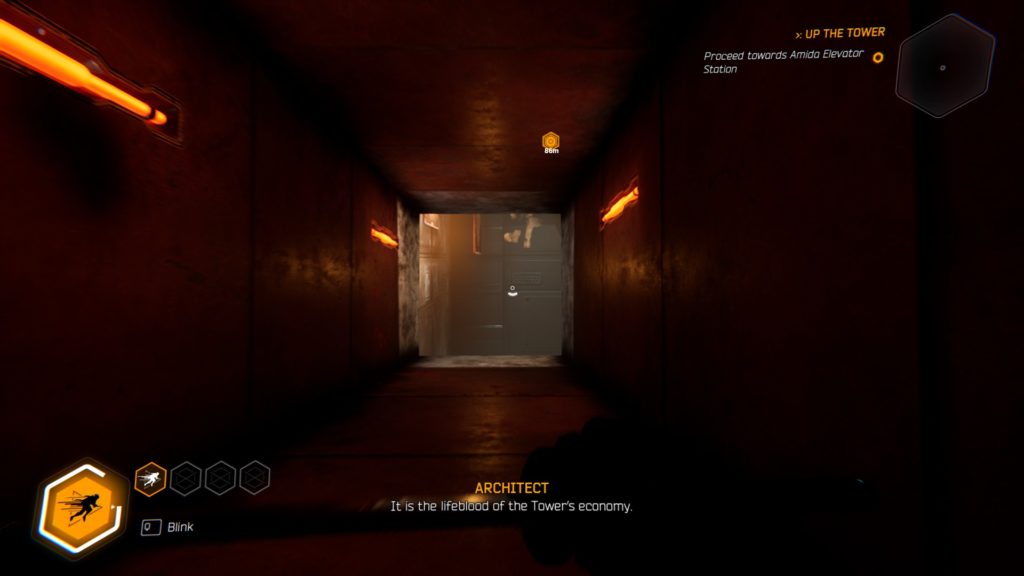
The game’s sounds and music are on point. The music is a hi-fi track, similar to some of the ones I use while exercising (yes, what are you thinking?). That helps a lot in ensuring one stays hooked throughout the session. It isn’t really a hack’n’slash game if the music doesn’t instigate you to go complete those levels with zero deaths. Nothing can really beat the satisfaction of hearing the Ghostrunner slash out the guts of a guard stupid enough to stand in her way.
Verdict
Ghostrunner is a game which is incredibly fun to play, especially if you’re in the mood for putting your reflexes to the test. The game tests the player on multiple grounds, and while being quite challenging by nature, it’s extremely satisfying to push for completion. This is definitely one game one should buy and push for completion – if they have the guts to do it, that is!


